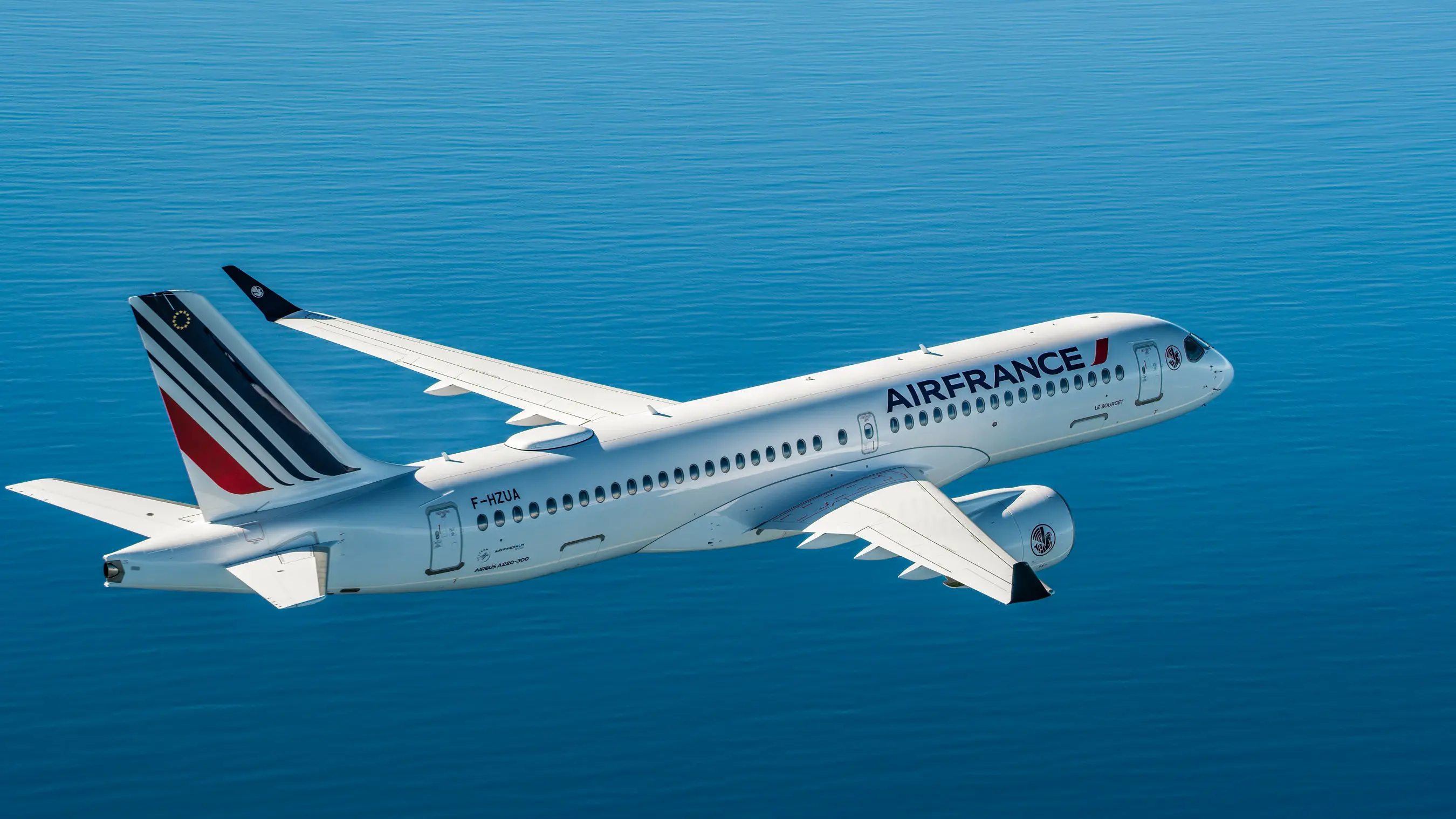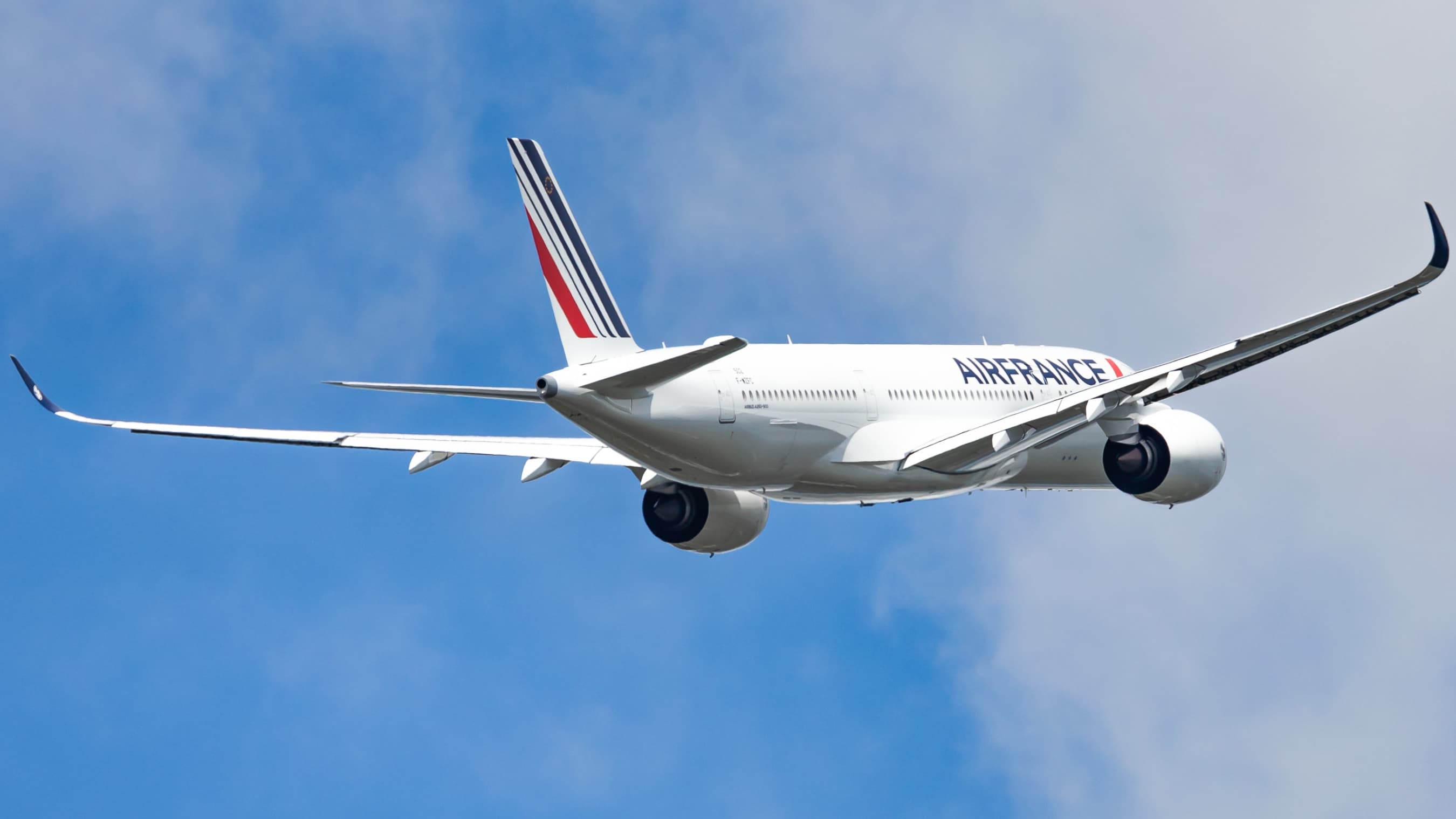
Our carbon footprint
© air france
© Air France
CARBON FOOTPRINT OF THE AIR FRANCE GROUP IN 2019

© Air France
Estimate: 20 million tons of CO₂
83% direct emissions - 16.2 mTCO₂
Fuel combustion
17% indirect emissions - 3.4 mTCO₂
Mostly related to the production and transport of fuel
0,04% production of electricity consumed - 0.008 mTCO₂
AIR FRANCE’S CO₂ EMISSIONS CAN BE BROKEN DOWN INTO
- Direct emissions (known as scope 1), generated by our own activities. These represent about 83% of total emissions and are mainly due to the combustion of fuel for our aircraft.
- Emissions linked to the production of electricity consumed (known as scope 2): these represent a marginal part of our emissions (less than 0.04%).
- Indirect emissions (known as scope 3), generated upstream and downstream of our operations. These amount to approximately 17% of total emissions, the majority of which are related to the production and transportation of fuel.
Other indirect emissions are generated by the manufacture and end-of-life of aircraft, the purchase of our products and services, passenger transport to and from airports and staff travel. These emissions are less than those from jet fuel production and are currently being more accurately assessed.

© Air France
LIMIT OUR FUEL CONSUMPTION

© Air France
In total, close to 90% of Air France's emissions are linked to the fuel consumed by our aircraft. Decarbonizing our operations therefore means limiting our fuel consumption as much as possible and gradually replacing fossil fuel with alternative fuels that emit less CO₂.
OTHER EMISSIONS THAT CONTRIBUTE TO GLOBAL WARMING
In addition to CO₂, aircraft produce other emissions that contribute to global warming (water vapor, soot particles, nitrogen oxides, ...). Nitrogen oxides contribute to global warming by forming ozone, while they cause a cooling effect by destroying methane. The exhaust particles emitted by engines promote the formation of condensation trails which, in a cold, humid atmosphere, persist and evolve into cirrus clouds.
There are still many uncertainties in assessing the climatic impact of these non-CO₂ effects, but the latest scientific studies agree that they have a significant warming impact, especially in the short term, of the same order of magnitude as that of CO₂. Air France is mobilized to identify and implement solutions to reduce non-CO₂ effects, and thus minimize the climatic impact of its flights.

© air france
Questions/Answers
Calculation and control of CO₂ emissions calculation
We want to be completely transparent about our environmental impact and its evolution.
In 2019 Air France had reduced its total CO₂ emissions by 6% compared to 2005, despite a +32% increase in traffic over the same period.
It was necessary to start reducing our emissions, but this pace is not sufficient and we must make faster progress in this field.
How your carbon footprint is calculated and monitored?
Every year, KPMG verifies whether Air France’s calculation methods of CO2 emissions are in line with principles defined by international guideline. This audit also covers the data used, including fuel quantities, and checks whether our calculation complies with the chosen calculation methodology.
Our latest methods and audit report
